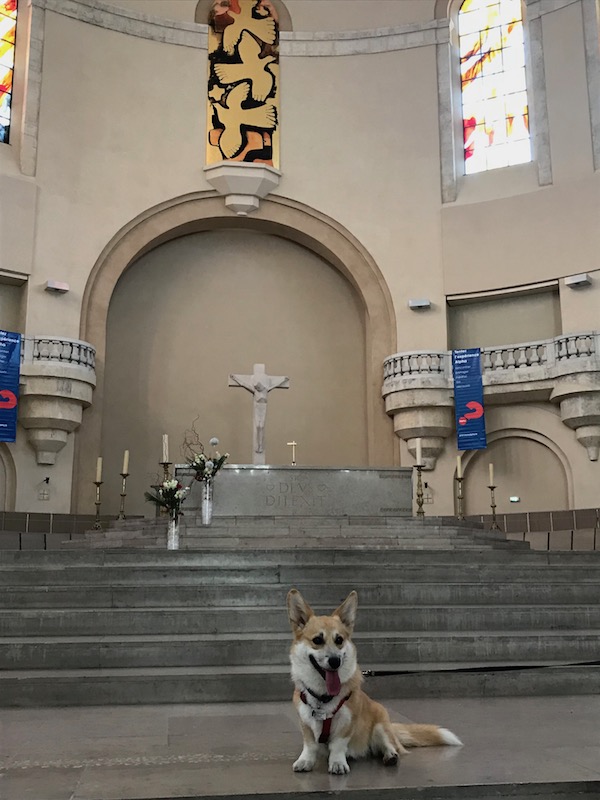Our Blog - Grenoble, France
We have a friend who is from Grenoble, but it took us this long to make the trek over. It is just at the base of the Alps and has the nickname of "capital of the Alps". Like many towns in France, it dates back to the Gallo-Roman period. It held the Winter Olympics in 1968 and is now asserting itself as a major European scientific center. We stayed at a nice hotel in the historical center, a short walk away from the cable car station, that we saw going up to the Bastille on our way in. Here are a couple random pictures to try to give you a view of the area. The city is somewhat down in a valley, surrounded on 3 sides by the mountains. You can see some of the snow that is still up on the top of the mountains.
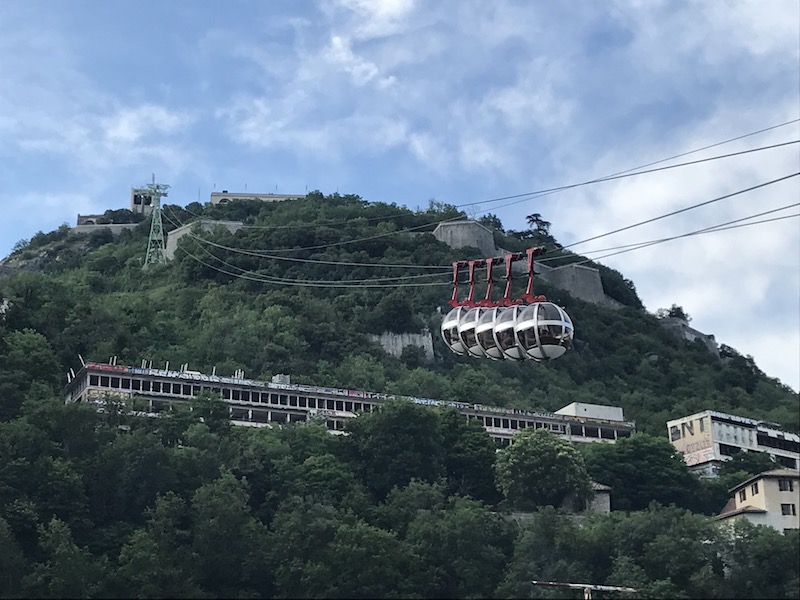
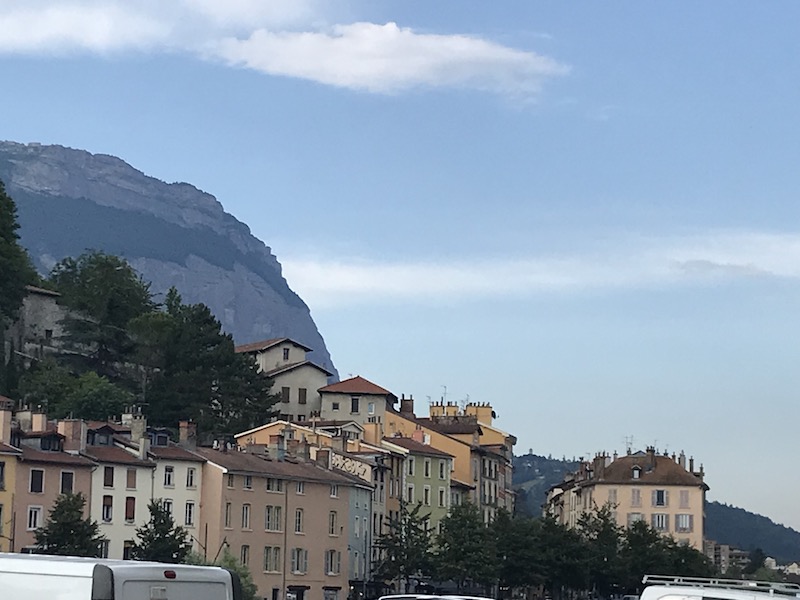

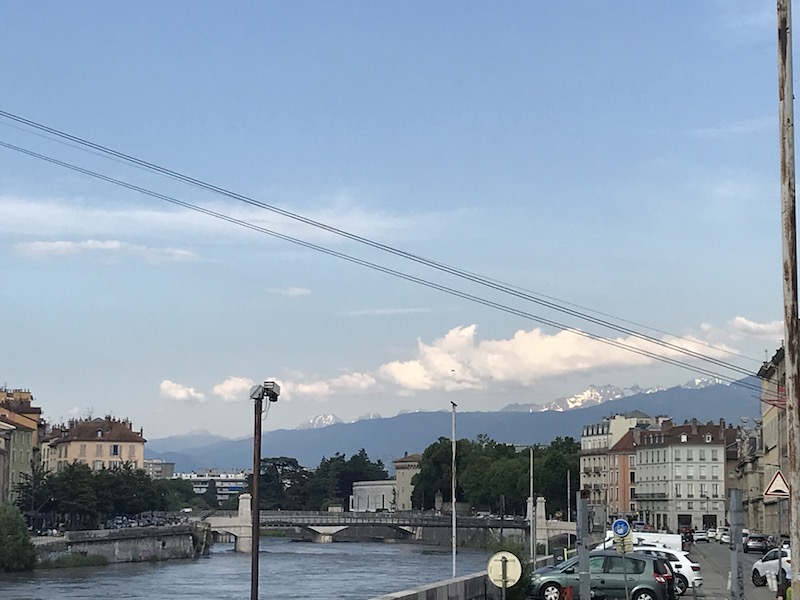

The Perret Tower is an observation tower in the middle of a large park. It is the only remaining item from the 1925 International White Coal Exhibition and was the first tower built in reinforced concrete in Europe.


The first stone of Saint-Louis church was built between 1689 and 1699 in a classical French style. For reasons of economy, the architecture is deliberately sober.
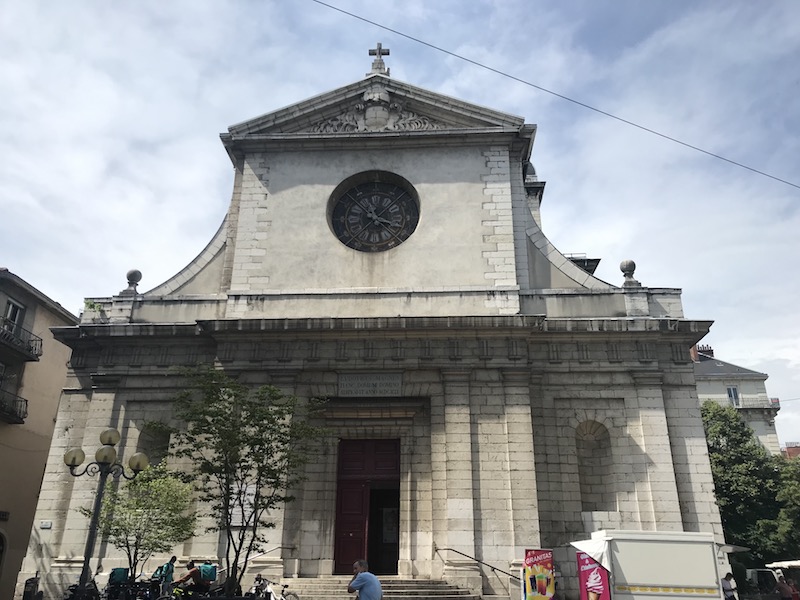

The stained-glass windows are recognizably with two different styles: some date back to 1925 while others date back to 1934. The first 2 are from 1925 (you can see the date and artist written in the bottom-middle) and the 3rd is from 1934.


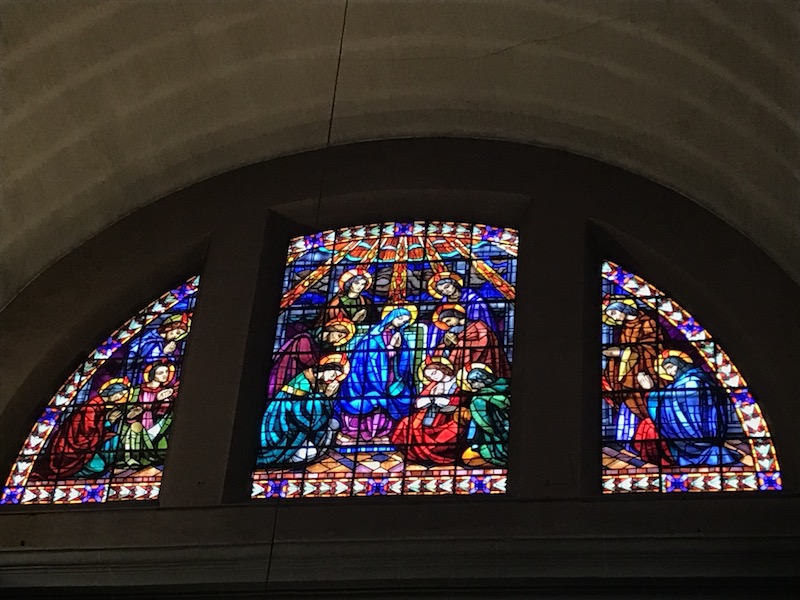
Dogs are not normally allowed in churches in France, but it was quite hot out and so Lucy (wearing her blue cooling vest) decided to take a little rest inside where it was cooler.
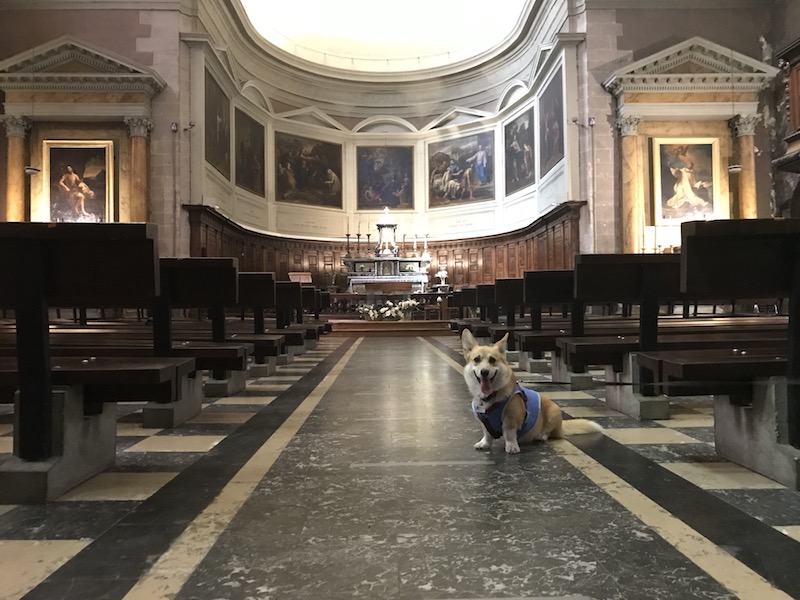
Place Grenette was just around the corner from our hotel. Since the 17th century, this has been the town's main square, used for grains and livestock markets. The magnificent fountain, "Le Château d'Eau Lavalette" was built in 1825 and is decorated with four cherubs set over dolphins, to symbolize the Dauphiné. The Dauphiné is the name of the former province which contained Grenoble and comes from the French word for dolphine (le Dauphin). It was the nickname of the local ruler, Count Guigues IV, in the 12th century.

The Fountain of the Three Orders, also called the Fountain of the Centenary, commemorates the pre-revolutionary events of the summer of 1788 in Grenoble, namely the Tile Day and the Meeting of the Estates General of Dauphiné. It was inaugurated in 1897.
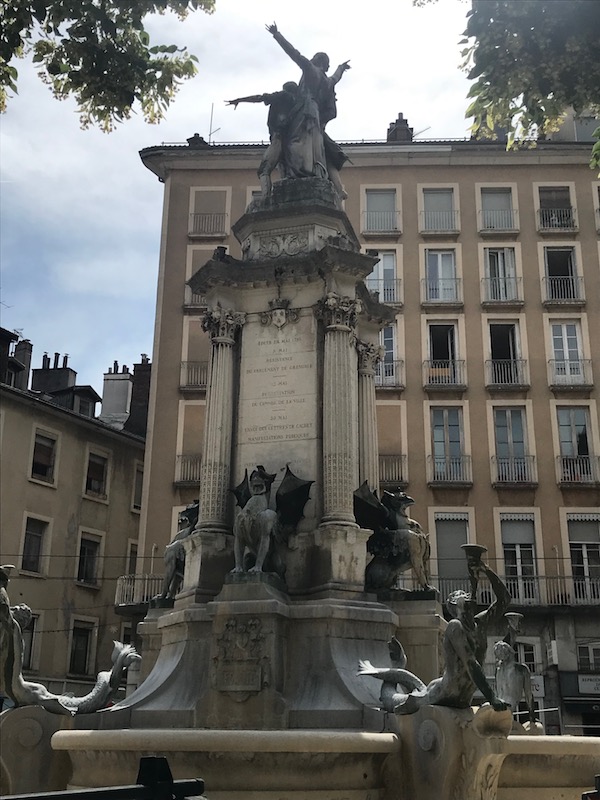
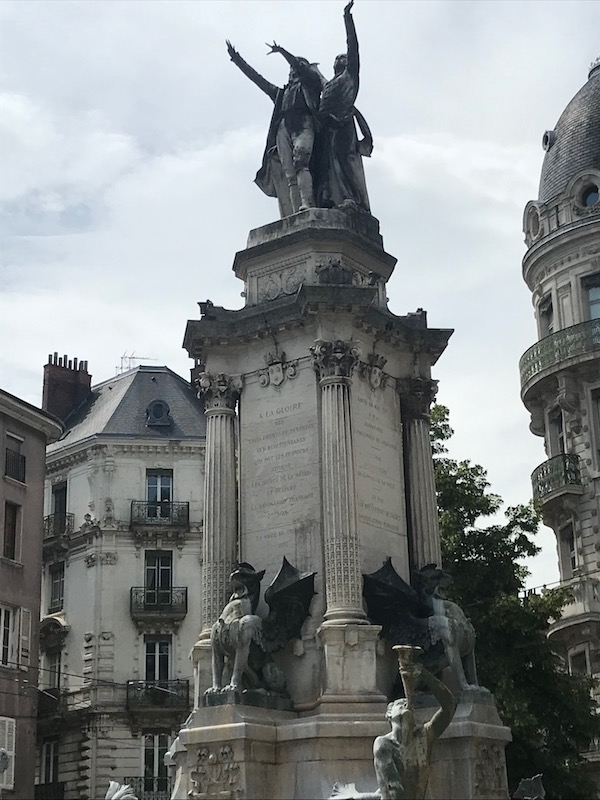

The Market hall, Halle Sainte-Claire, dates back to the late 19th century. The land was previously part of the Sainte-Claire convent and the city acquired the land in 1920 to create a square and the market. The first market hall was built in 1830 and this one, inspired by the Baltard market hall in Paris, replaced it in 1874.
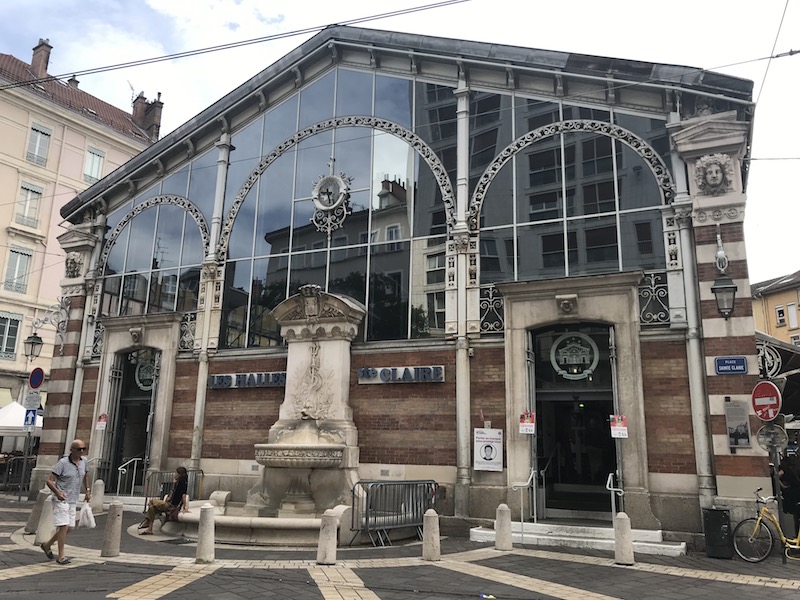
We made sure that we took the cable car up to the Bastille. The cable car here was inaugurated in 1934 and it is one of the oldest urban cable cars in the world. It goes up 863 feet at a speed of 20 ft/s with the trip to the Bastille taking between 3 and 4 minutes. The cars cross over the Isère River and over the roofs of the old Saint Laurent quarter before passing over a bastion of the curtain wall and various successive fortifications before arriving at the upper station. In August 1976, the lower station was rebuilt slightly back from the quay so that the road no longer passed through an archway, and the spherical cabins ("the bubbles", 5 in summer and 4 in winter) made their first appearance.
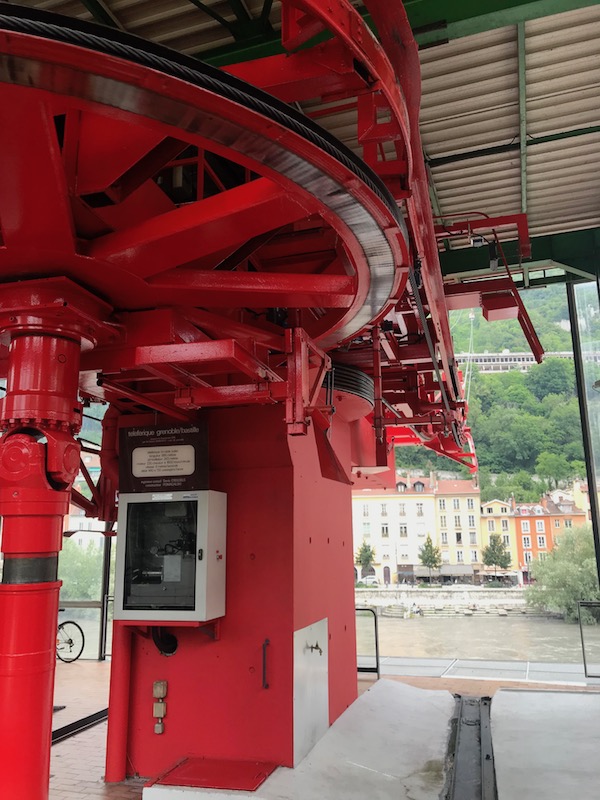

And here are some of the better pictures of Grenoble, the Basille, and the mountains from the "bubble".
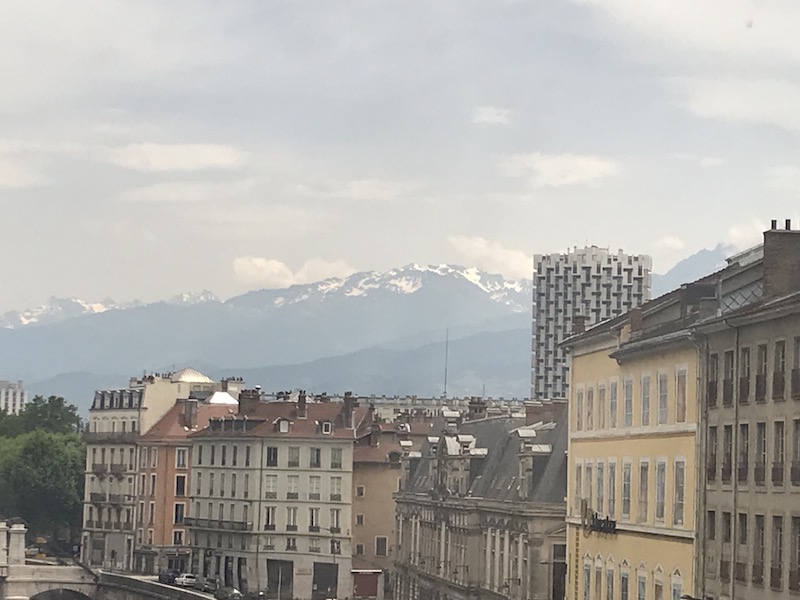

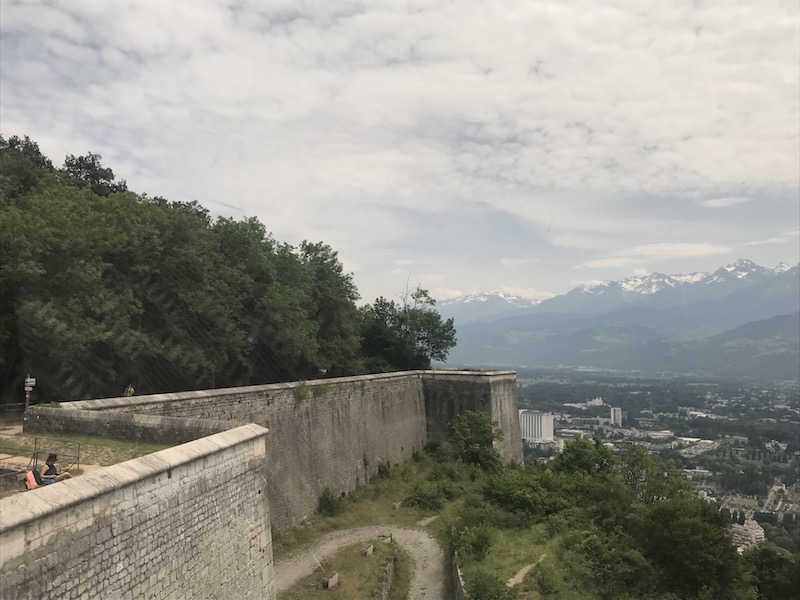
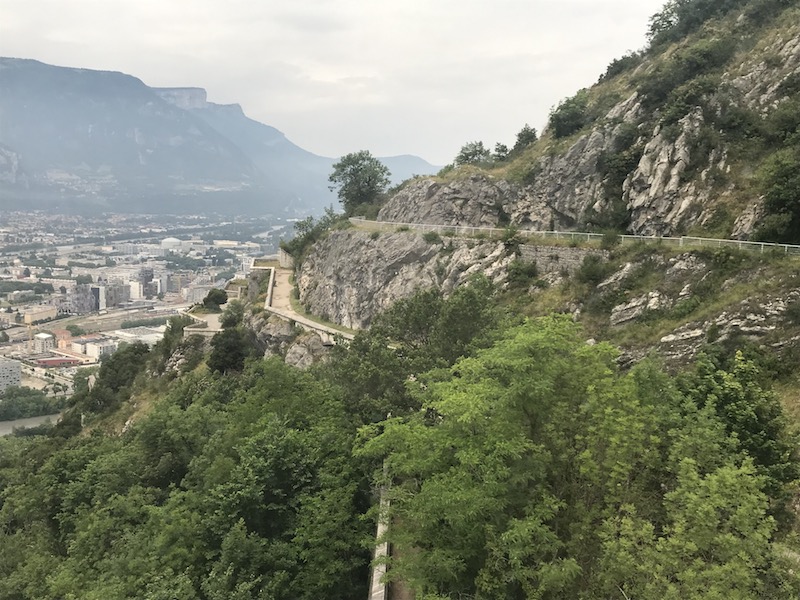
The 19th-century Bastille itself wasn't that interesting, but there are some really nice views from there.
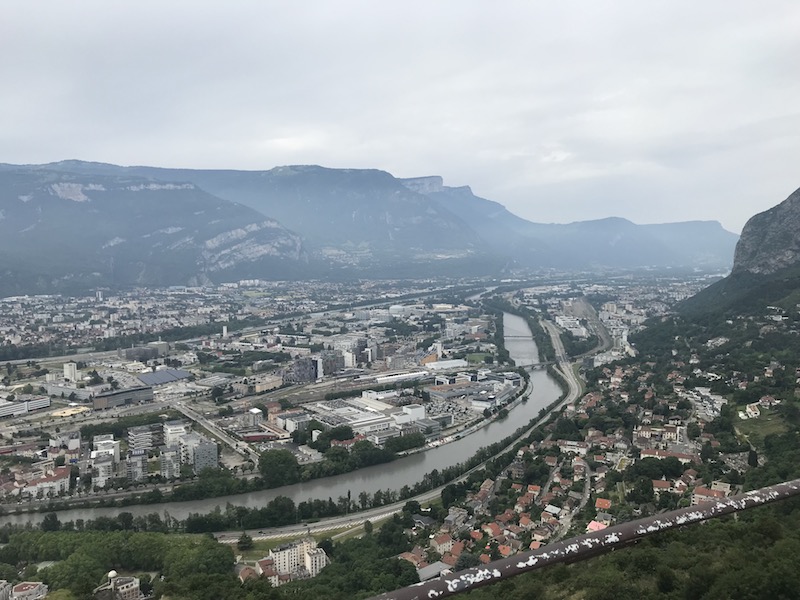
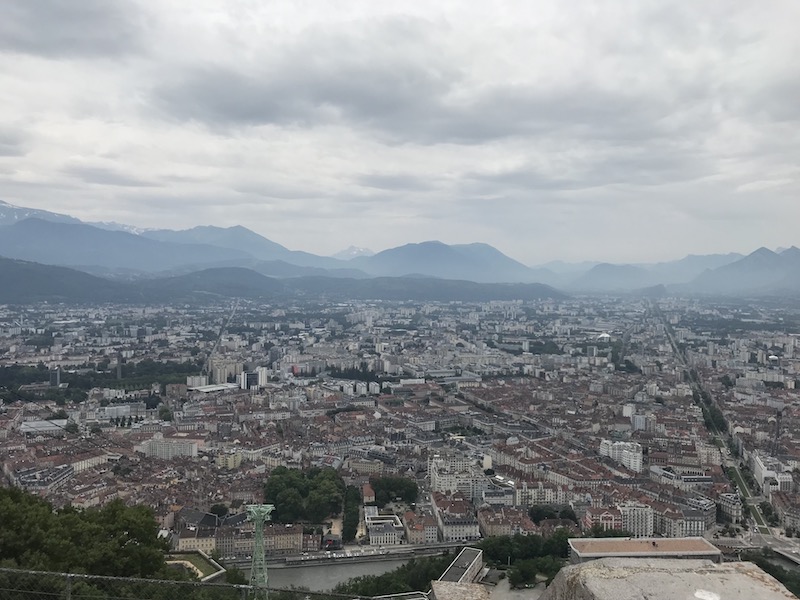



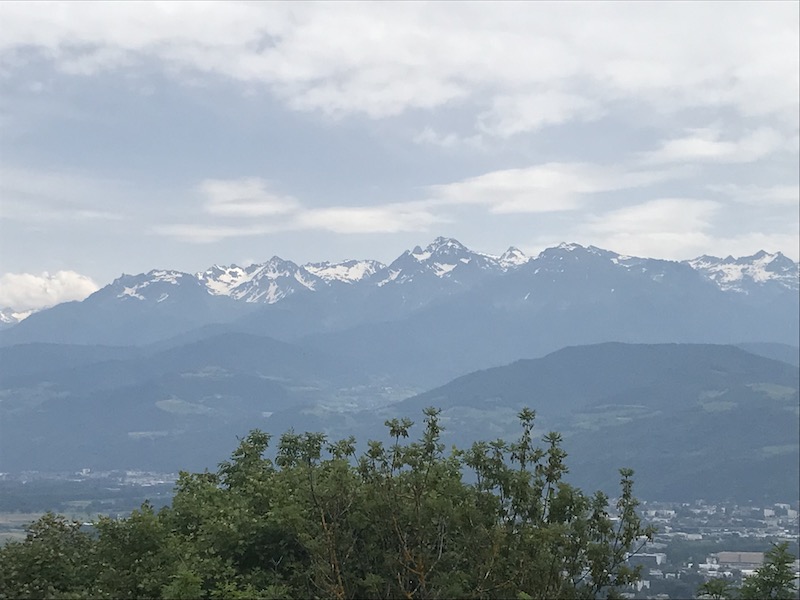


L'Hotel du Duc des Lesdiguières was built in 1602 as a private mansion for the Duke of Lesdiguières and his successors. It was used as the town hall from 1719 to 1967. The base of the tower dates back to the Gallo-Roman times (3rd century) and was part of the old city fortification walls.
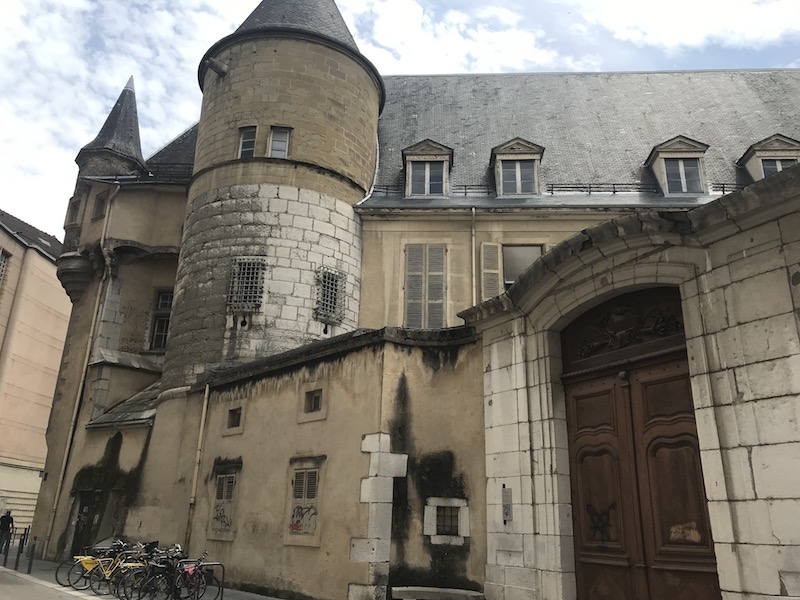
La Table Ronde is the oldest café in Grenoble and one of the oldest in France. It was opened in 1739 under the name of Café Caudet, changing to Flandrin in 1758 and finally La Table Ronde in 1797. During the Second World War, La Table Ronde, and particularly its back room, became a meeting place for resistance fighters. Journalist Jean Pain, who was known for his anti-German views, was arrested here on November 26, 1943 and executed the next day. After the Liberation, one of those responsible for his arrest told investigators that the journalist had been "sold" by a woman named Rosette, who was a waitress at the Café de la Table Ronde. She was arrested, quickly tried, condemned to death, and shot.

The cathedral of Grenoble, Notre-Dame de Grenoble, was built in the 10th century although there was a church here in the 4th century (remains of the 1st baptistery from the 4th century was found in 1989). The interior has some very Gothic touches, like the ribbed vaults.



The altar in the Chapelle of the Sacred Heart dates from 1815 and the paintings were done by a local painter. Here you can also see the very vivid colors on the ceiling and ribbed vaults.


The Ciborium was ordered in 1455. It is 14 meters tall and carved from a soft sandstone, mixed with clay and quartz called "molasse". It is in a very ornate, Flamboyant Gothic style. It is painted a brown/orange color to harmonize with the bricks in the vaults. Getting a close-up view, it is amazing that this is actually carved stone and not wood!
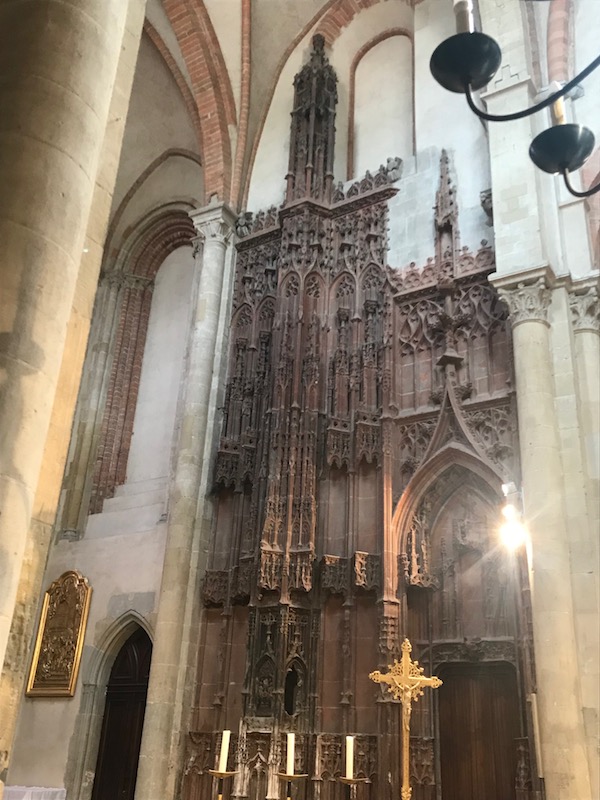

Another bit of carved stone, this one just over a doorway.

While not very old, I thought the modern stained glass window was quite nice.

L'Hotel Rabot dates to the middle of the 16th century and it has this lovely tower.

Across the square from La Table Ronde is the Palais du Parlement du Dauphiné. The former palace of the Dauphinois parliament and the heart of the legal system for 500 years, is the most interesting civil monument of historic Grenoble. I caught just a little part of the left-wing, which is the older section. It was built under Louis XI from 1490 to 1510, in a style characteristic of Late Gothic. The wing on the right is in a Renaissance style and I found it to be much prettier than the Gothic left-wing.

In various parts of town, you find bits and pieces dating back to Roman times as well as the Middle Ages. This first one, a little doorway, was just around the corner from our hotel, hidden behind a restaurant.
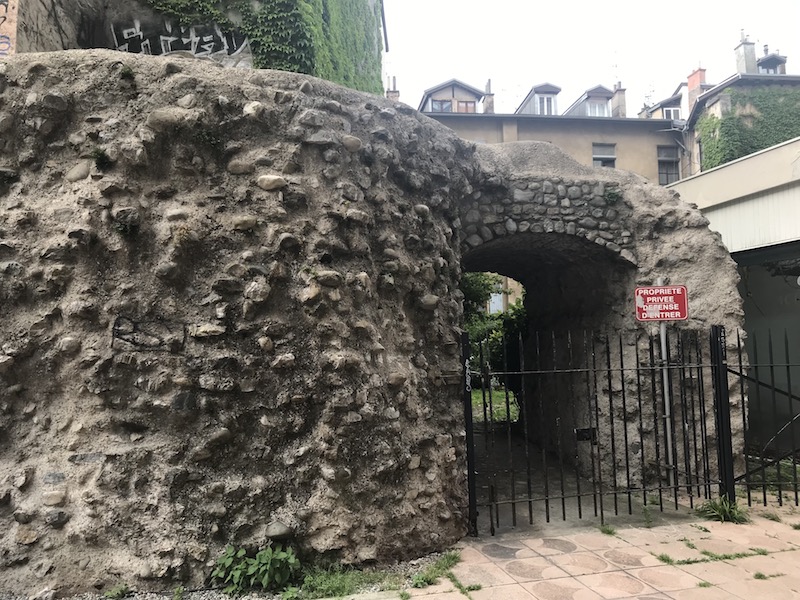

Here is the Lion fountain, which was created in 1843 to commemorate the start of the construction of the right bank quays. It shows a fight between a lion (symbolizing the city of Grenoble) getting control the "mood swings" of the Isère River. The name of the river in old French means "the snake".


Tour de l'Isle is one of the towers of the city fortifications. By the end of 1390, the structural work of the tower was done. It housed the first town hall for two centuries. Then, in 1518, the roof was set on fire by lightning. It is now used for special exhibitions at the museum next door.


The Basilique du Sacré-Cœur is a rather recent church, built in 1922 in a Romano-Byzantine style. The interior is very large and open. The altar is composed of a large monolithic slab and is extremely simple, without sculptures or decoration. The thing that we went to see here was the stained glass windows. In March 2016, the first 6 stained-glass windows of a set of 24, designed by the artist Arcabas, were installed in the basilica. Six more were installed in 2016 but then a fundraising campaign has to be started in 2017 to finance the last 12 windows. These last 12 were designed before the artist died in 2018 and were finally installed in 2019.

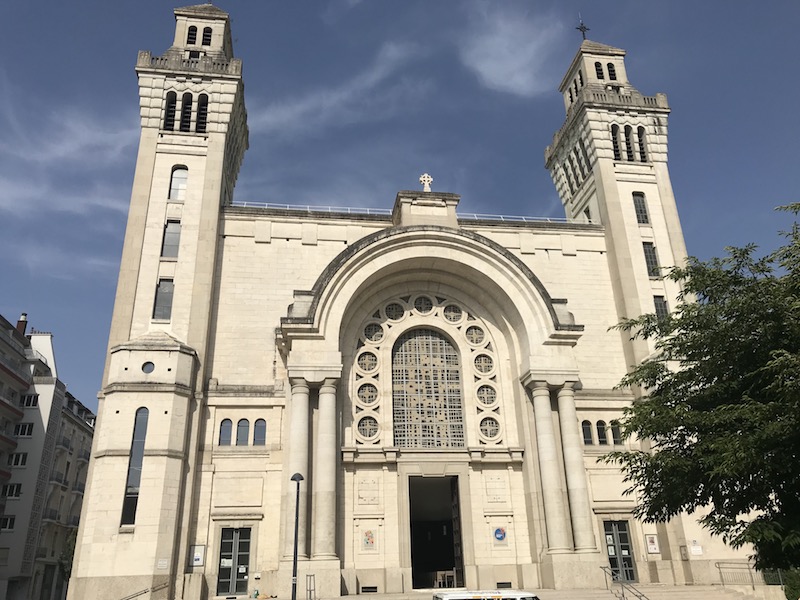
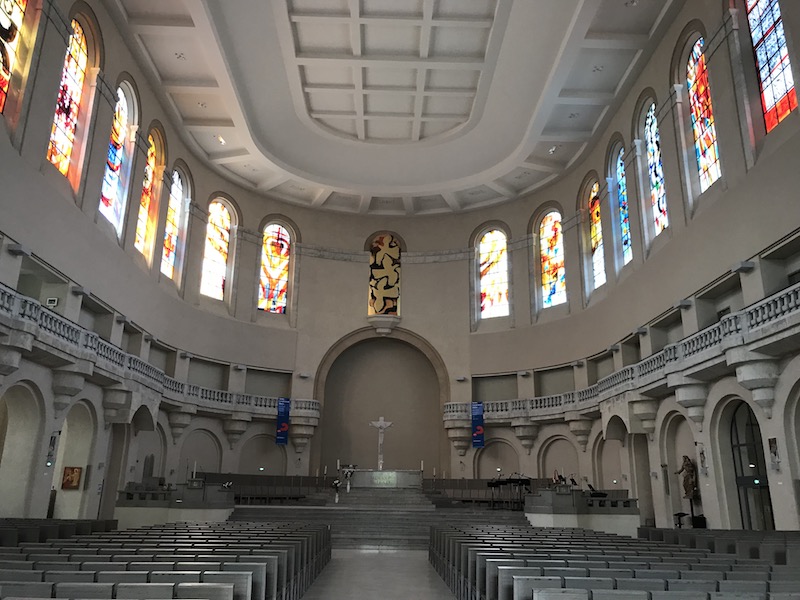

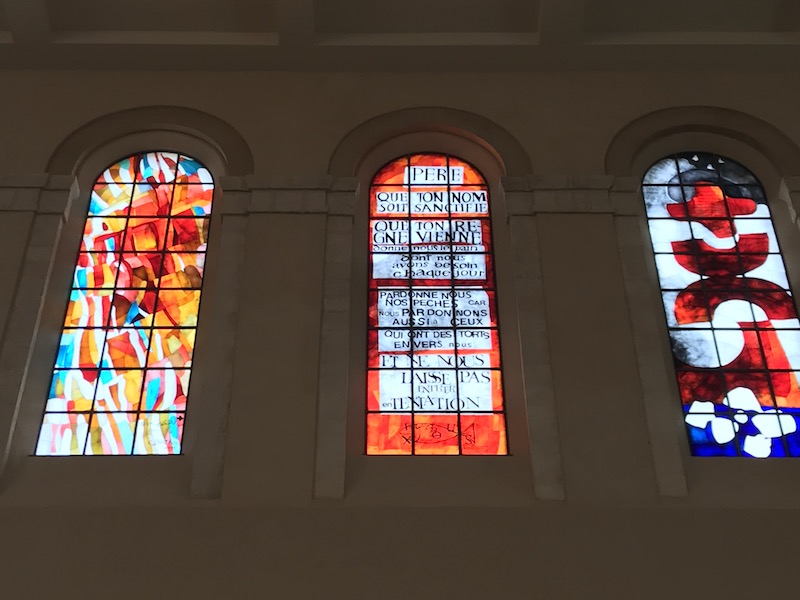
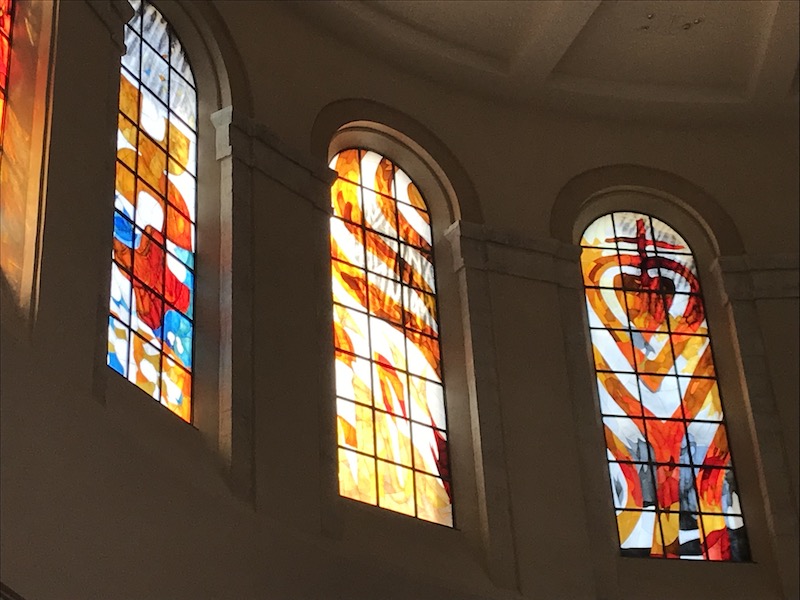
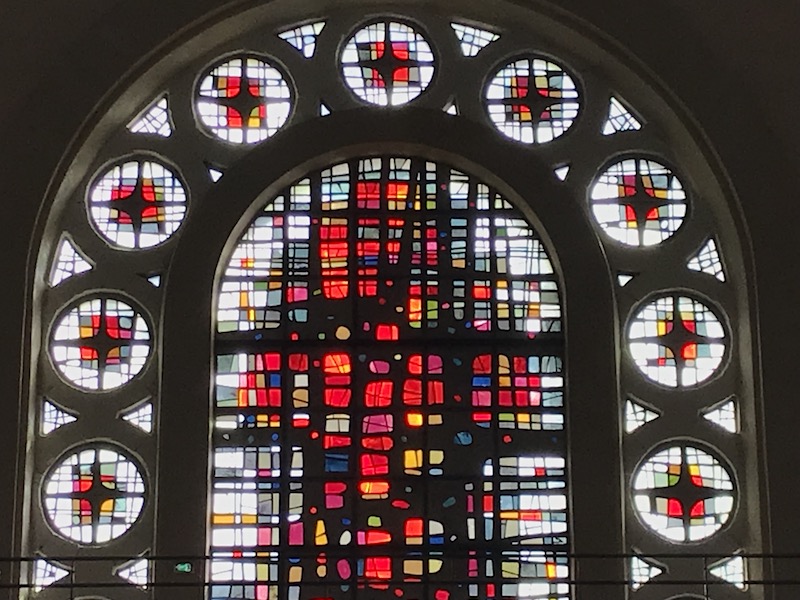
And Lucy decided to take a peek at the windows as well, hanging out near the altar.

